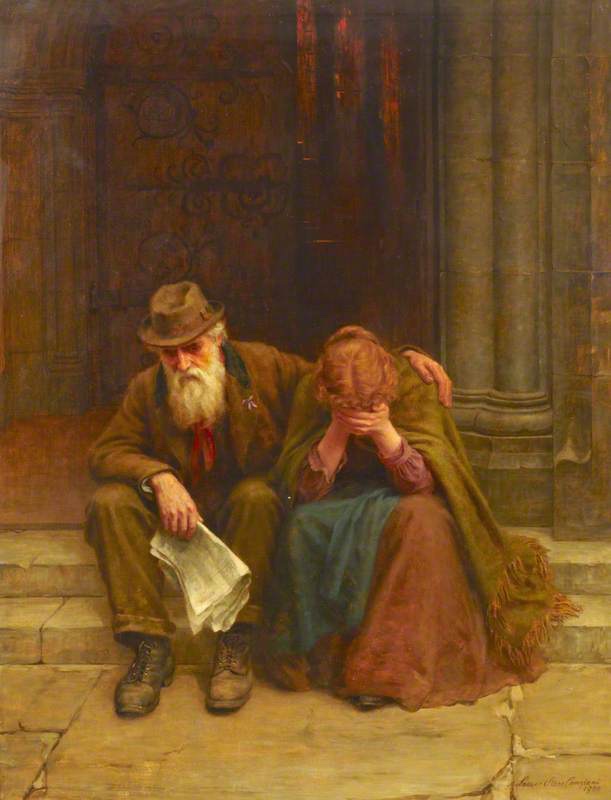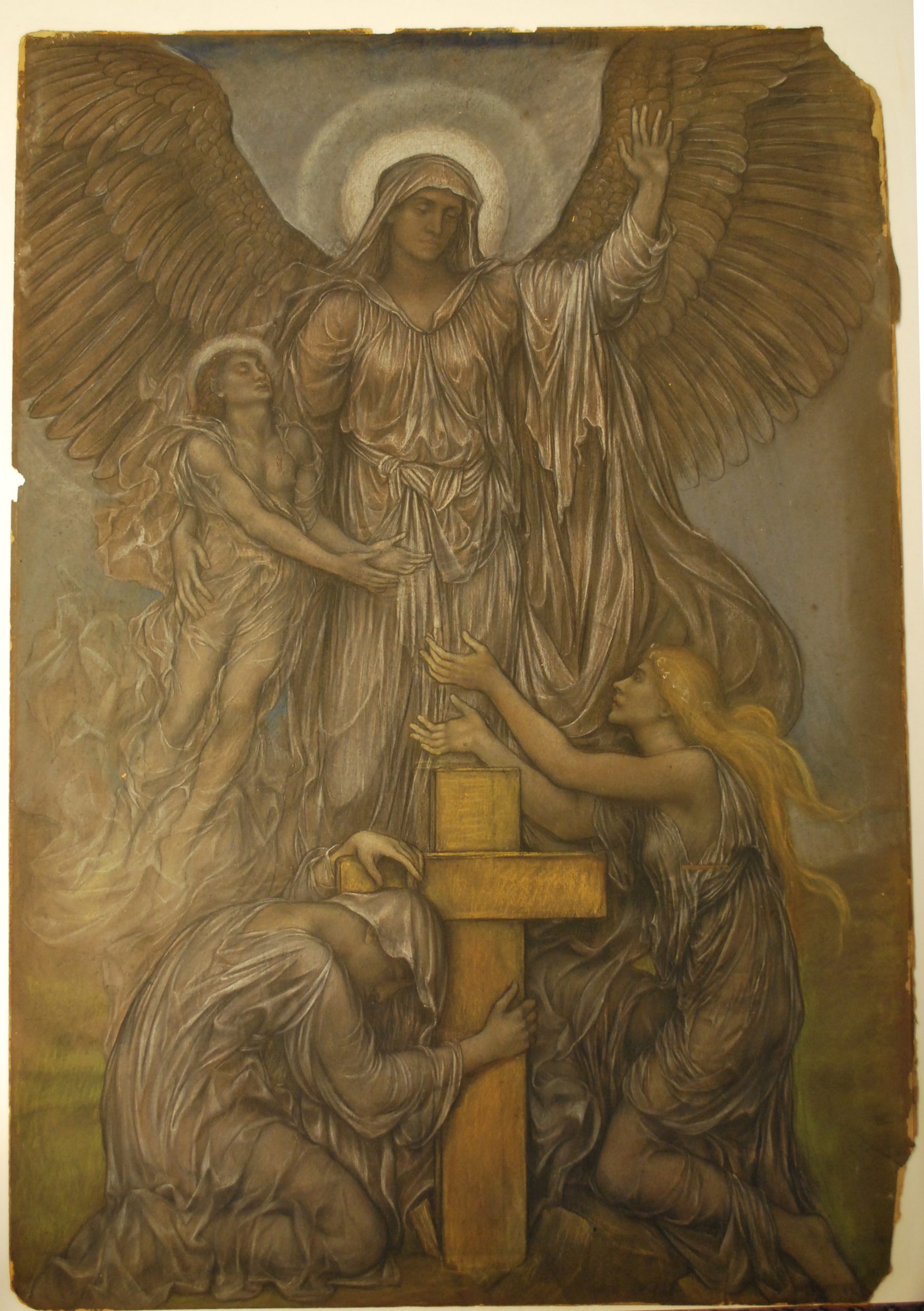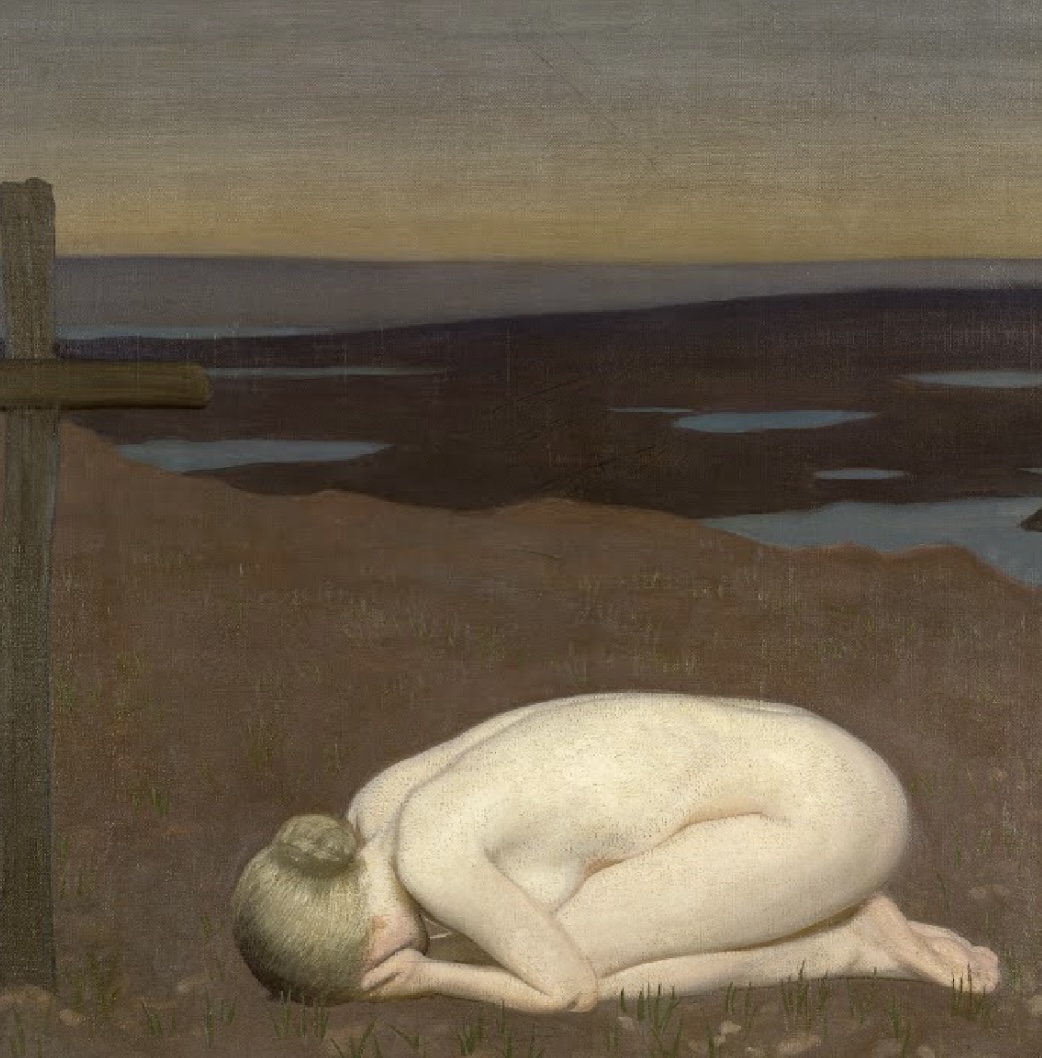Volunteer Sonja Seear discusses how Victorian painters created emotive pictures which express grief. Sonja has responded to some of the picture on display in our exhibition Artist of Hope at Towneley Hall in Burnley.
Grief was an accepted, common, and even favoured theme in painting during the Victorian era (1837 – 1901), and the first two decades of the twentieth century. The combination of a wave of national mourning following the death of Queen Victoria’s husband, Prince Albert, at the young age of 42, a society in which there was a high risk of early death fromdisease, and limited means to treat disease, and wars, such as the Second Anglo-Boer War (1898 – 1902) and the First World War (1914 – 1918), all influenced social norms and British art.
There was a diverse artistic response from artists in their representation of grief. For example, artists like the British painter, Louisa Starr Canziani (1845 – 1909), chose a realistic approach to depicting grief, as can be seen in her painting War News, 1900, which was painted during the Second Anglo-Boer War. The scene depicted creates the immediate impression that Canziani, while passing, just happens to chance upon a woman lost in her moment of grief.

Louisa Starr Canziani, War News, 1900, oil on canvas, Leighton House, Museum, 118.5 cm x 90.5 cm
In this painting an elderly man, possibly the young woman’s father is comforting her, in the street, seemingly lost for words. She holds her head in tears. The man is holding a newspaper, which may contain the most recent news of the casualties of the war. They are sitting on what appear to bechurch steps, with a closed church door behind them. The light suggests early morning, and that they are waiting for these church doors to open. These elements allude to the importance of religion, and how it offered necessary consolation in grief.
However, Evelyn De Morgan’s (1855 – 1919) takes a very different creative approach, in her painting Pro Patria Mori, c. 1914 -18. It is a Symbolist painting, in which De Morgan’s and society’s interest in Spiritualism is very apparent. Due to the immense death toll during the First World War, the British Government had made the decision not to repatriate the bodies of the fallen soldiers. This prevented traditional mourning and burial practices, and in turn heightened society’s belief in Spiritualism, the resurrection and immortality of the soul.

Pro Patria Mori, c.1914-1918, pastel on board, photography (original destroyed in fire in 1991) De Morgan Collection
In this painting we see the mother and wife of a fallen soldier. They are mourning by his graveside. The grief of the older woman is palpable. In utter despair, she has collapsed onto the grave and is clinging onto the cross. Whereas, the younger woman is looking upwards with outstretched hands towards the resurrected spirit of her beloved husband, who is being embraced by an angel. This all symbolises the Spiritualist belief in spiritual redemption, and underscores the belief in hope and faith, to overcome loss.
However, George Clausen’s (1852 – 1944) painting Youth Mourning, 1916, painted at a similar time to De Morgan’s Pro Patria Mori, could not be, stylistically, any more different. Clausen painted this work in response to the horrors of the First World War, specifically, the death of his own daughter’s fiancé, Second Lieutenant Charles Geraint Christopher Payne, who died during the Battle of Neuve Chapelle, France.

George Clause, Youth Mourning, 1916, oil on canvas, Imperial War Museum, 91 cm x 91 cm
Missing are the rich colours and textiles we typically see in De Morgan’s painting. There is no apparent sense of hope or salvation that we see through the Spiritualism in De Morgan’s painting, or through religion in Canziani’s painting. Instead,the viewer is confronted with a stark scene; a naked young woman, the personification of youth. She kneels, grief-stricken and crying, holding her head in despair before a wooden unmarked cross. In the distance we can see the flooded craters of a battlefield. The starkness and barren landscape emphasise the grief and emptiness of death, and the loss of future life.
The commonality between these paintings is that they all show women immersed in grief, because women had the role of ‘chief mourner’ – this was because of the inconceivable numbers of male casualties from the First World War, so the majority of mourners were female.
Sources
Blackwell Evelyn De Morgan Guide (2015)
https://blog.sevenponds.com/soulful-expressions/the-victorian-era-the-art-of-mourning
https://blog.nationalarchives.gov.uk/my-tommys-war-youth-mourning/
http://www.english.emory.edu/LostPoets/nude.html






